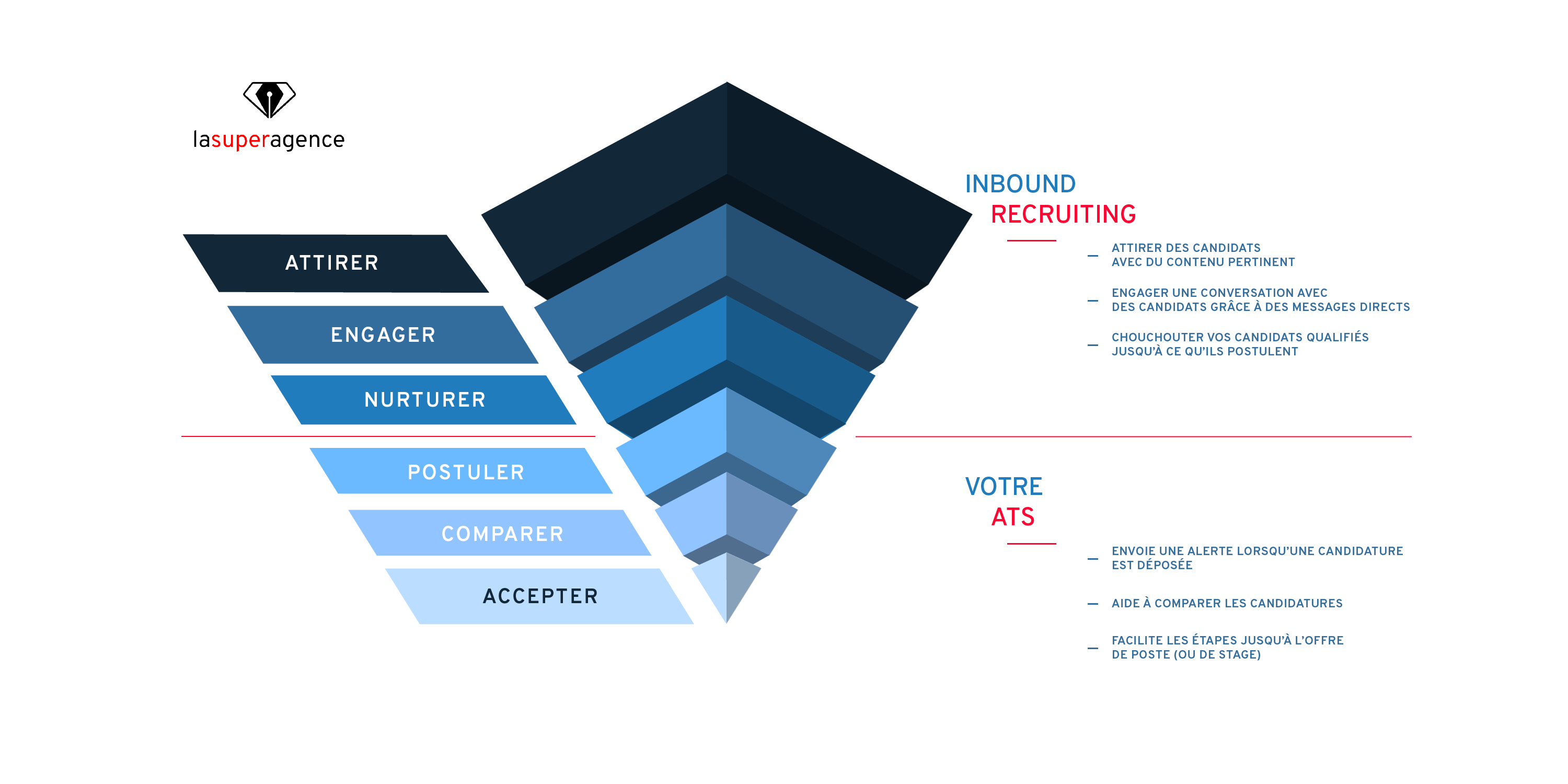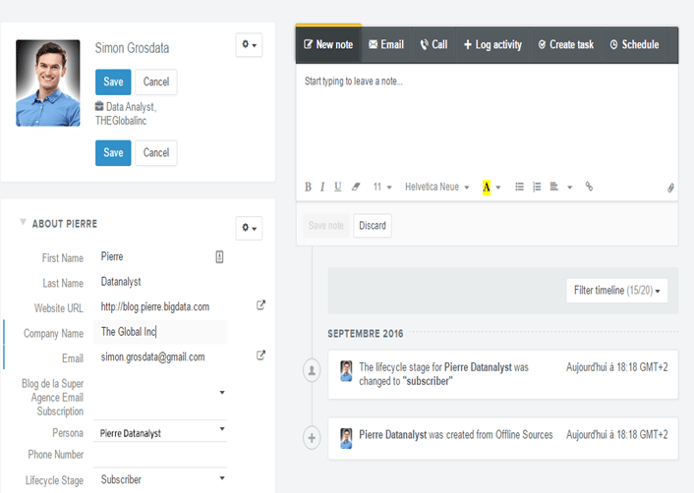Why can a CRM be very useful in a recruitment strategy? How is it different from an ATS? Here are some questions you may not be asking yourself (yet) but will likely be critical in the coming years!In the recruiting world, the debate between CRM and ATS is just getting started and it's important to understand its issues.
Let's make it clear from the outset that no tool, no matter how powerful, will solve your recruiting problems with a wave of a magic wand.
But acquiring and using the right software, on the other hand, can allow you to significantly gain in efficiency, while reducing your costs.
ATS or CRM: which system is better for optimizing your recruitment?
ATS vs CRM: what are we talking about?
Loyal readers of the The Super Agency blog and consummate professionals, it's likely that you have no need for a definition of an ATS or CRM.
However, for the sake of convenience and so that we can talk about the same things well, here is a little reminder:

A CRM is used for Inbound Recruiting before the candidate applies, ATS is used for recruiting after the candidate applies
An ATS (or Applicant Tracking System) is a system for tracking applicants' journey to a job opening. Thanks to it, it is possible to have a view on the entire recruitment process, and to record the applicants' applications. The ATS is the traditional tool of the recruiter.
A CRM (or Customer Relationship Management) is used, as the name implies, to manage the relationship with the customer to build loyalty and increase the revenue or margin earned with them. In the recruitment field, a CRM aims to manage the candidate relationship, maintain relationships with them and integrate them into a talent pool.

Hubspot, an example of a recruitment CRM
In other words, the ATS is a workflow and compliance tool while the CRM is an "ecosystem" of candidates (passive and active), as well as those who have applied to you in the past. The recruiting CRM acts as a clearinghouse of information about the talent you can acquire.
For now, ATS is dominant, but some experts estimate that in a few years, CRM could represent more than 60% of applicant management systems.
That's food for thought, isn't it?
The limitations of TSA
Many believe they don't need a recruitment CRM as long as they already have a TTY.
In reality, the capabilities of application management tools are nowhere near that of a CRM (customer relationship management) tool.
Three main reasons for this:
1 - The (senseless) multiplication of the number of fields to be filled
In the "logic" of a TSA, as much information as possible should be requested from the applicant, even though only a fraction of that data will actually be used. Does this risk discouraging some?
It doesn't matter, because "only the most motivated will go all the way." This "obstacle course" approach is the complete opposite of the one advocated by marketers, who seek to "roll out the red carpet."
Guess which one is more effective?
2 - An unsegmented database
In most cases, it is literally impossible for a recruiter to properly use an ATS database without a proper filter function.
With a few exceptions, recruiting software does not allow for the creation of metadata, unlike CRMs that routinely incorporate this feature.
3 - The inability to measure candidate engagement
From an ATS perspective, all applications are equal, as most of the information is provided by the candidate themselves (including through their resume).
It is impossible to measure the level of engagement or the type of relationship the candidate has with the company: How often do they come to view the ads? What type of information is he or she most interested in? Do they regularly (or never) open the emails you send them?
A TSA falls through when a CRM lets you know.

A recruitment CRM helps you learn more about passive candidates
How do you know if you need a recruitment CRM
To find out if using a specific "candidate relationship management" tool is a necessity for your organization, here are some questions to guide you.
1 - Do you practice sourcing your candidates?
The ATS is just a reactive tool that is only used to process candidates who have applied. It is therefore totally useless for sourcing.
On the contrary, a good CRM allows you to take a proactive approach, target potential candidates and build relationships with them.
2 - Does your team use Excel spreadsheets to manage candidate data?
It's not uncommon to see companies spend tens of thousands of dollars on an ATS and have a recruiting team "keep track" of candidates with an Excel spreadsheet, post-it notes taped to the wall, and task reminders on Outlook.
What an irony, isn't it?
A recruiting CRM helps to avoid exactly this kind of situation.
3 - Do you employ more than one recruiter?
"No man is an island" - John Donne
A recruiter working solo is able to follow up correctly from recruiting software because it will memorize - to some degree - the exchanges and relationship with individual candidates.
As a team, all of your candidates' data must be accessible at all times. Recruiters need to know the status of each relationship, whether colleagues have already spoken to a candidate, etc.
With a recruiting CRM, it is possible to share notes, track candidates, develop and nurture prospect candidates, and document activity collaboratively and transparently across the organization.
4 - Do you have profiles that are difficult to source?
Clearly, some profiles are significantly more difficult to recruit than others.
If, for example, you're looking for mobile app developers, you'll have a much better chance of getting their attention by setting up an effective pipeline of candidates, than by posting an ad on a job board (unless you have an extraordinarily attractive employer brand).
This is where the recruiting CRM comes into its own: its role is precisely to improve the recruitment of targeted profiles, whereas the ATS simply manages direct applications.

Without the right tool, you'll have a hard time finding the candidate you need
5 - Are you wasting a lot of time on processes and workflows?
Without the right tool, sourcing and recruiting quickly becomes long, boring hours of data entry.
"Cleverly", the candidate himself is most often asked to perform this thankless task, betting at the same time that this will select "the most motivated" - as explained earlier.
This way of thinking is, let us repeat, perfectly obsolete and above all counterproductive.
The easiest thing to do is to lift the constraint for everyone and ensure that you have good data collection and transfer with a system designed for it.
6 - Do you have a large number of candidate profiles in your ATS?
All told, how many people have applied for a position with your company? Thousands? More? Your ATS database must be huge!
Know that most of the data you have collected is completely unusable. The worst part is that there could be hundreds of perfectly good profiles for your open positions, but with inaccurate information, you'll never know.
With a CRM, you can keep your information up to date by taking advantage of the impact of your nurturing or by cleverly using automated emailing.
7 - Do you often participate in job fairs or launch large online communication campaigns?
Fairs are often great ways to meet future candidates while promoting your employer brand. The problem is that they cost very expensive and it's quite complicated to measure the ROI of such actions. As for communication campaigns, they increasingly tend to drown in the mass, for equally exorbitant costs.
The advantage of inbound campaigns, such as Inbound Recruiting, is that you can continuously feed your recruiting CRM with fresh, streaming contact information instead of data collected on an ad hoc basis. This will make further processing easier.
Do you think a recruiting CRM is a priority for a recruiter or, on the contrary, do you think an ATS is enough? Tell us in the comments!
(Source : Beamery)









